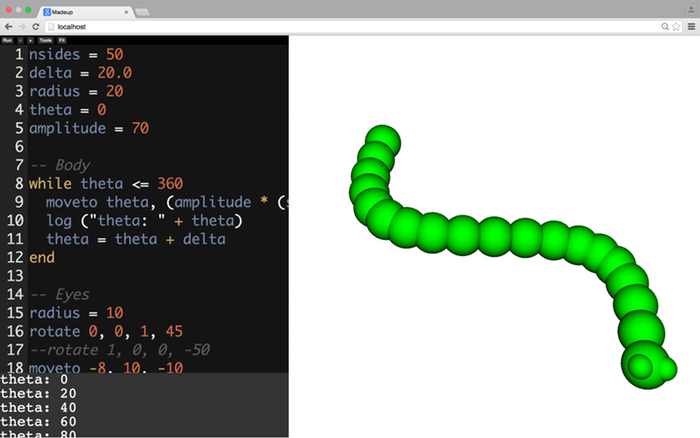
A project called “MadeUp” provides a way to programmatically generate 3D models suitable for 3D printing.
MadeUp was created by a group at the University of Wisconsin, Eau Claire, specifically to help teach students how to program. While other programming languages deliver “information” output, MadeUp is designed to deliver 3D models as its output. Even better for educators, the language and concepts are straightforward and easy to learn.
It works as do other programming languages: A sequence of instructions is sequentially executed. The purpose of the code is to move a kind of “cursor” through a 3D space, leaving a trail that becomes the solid part of a 3D model.
This is different from the currently most popular 3D programming generator, OpenSCAD, which operates on solid primitive shapes. MadeUp includes all the basic programming features, such as loops and decisions. By tracing paths in a 3D space, you can create many complex 3D shapes.
Will MadeUp be made open source? According to Chris Johnson, one of the team behind MadeUp:
We benefited greatly from many open source projects in building this (the ACE text editor, THREE.js, vim, Linux, Apache, PHP, g++, ANTLR, the OpenJDK, git, Firefox, and Chrome). It seems fitting that this project also be open source. As part of the public release in early 2016, the entire source code behind Madeup (the interface, interpreter, and model generating code) will be released on GitHub.
Thus we will have by 2016 at least two freely available methods of generating 3D models. If you’d like to support this project, hit the link below.
Via Kickstarter

